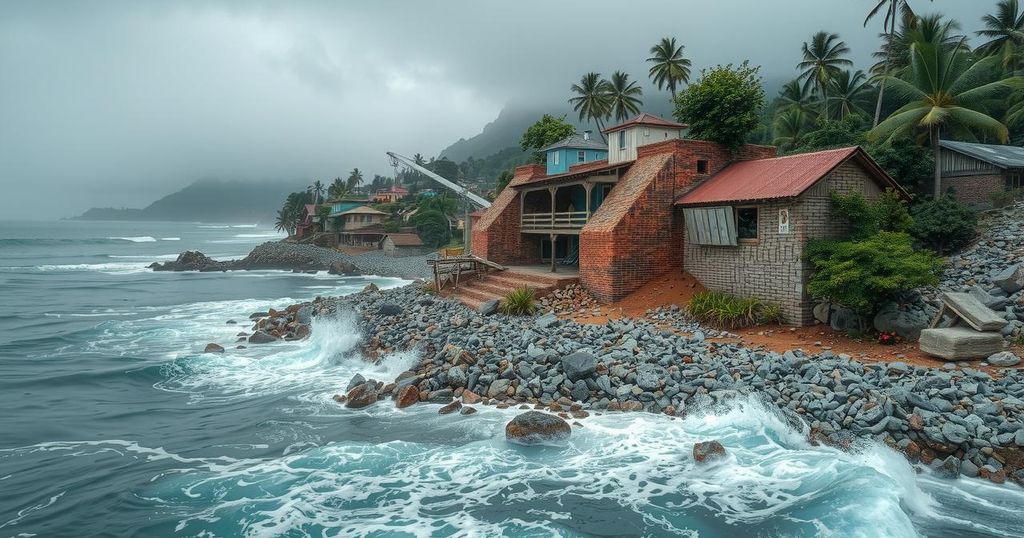Commemorating Two Decades Since the Devastating 2004 Tsunami in India

Two decades after a devastating 9.1 magnitude earthquake and tsunami struck India, survivors like Yusuf Ansari and Jaya recount the profound changes they experienced. The tsunami claimed thousands of lives and reshaped communities, prompting significant government aid for housing and infrastructure, although many still struggle to cope with the lingering trauma and loss.
NAGAPATTINAM, India (AP) — On a fateful morning nearly two decades ago, Yusuf Ansari, then a young boy, experienced a life-altering event when a catastrophic 9.1 magnitude earthquake struck off the coast of Sumatra, triggering a devastating tsunami that surged towards India. Now a 32-year-old motor rickshaw driver, he vividly recalls the chaos that ensued as a dark wave approached their beach, forcing families to flee to higher ground in panic.
The tsunami of December 26, 2004, proved to be one of the deadliest natural disasters in history, claiming approximately 230,000 lives across numerous countries, including India. Next Thursday, local fishing communities plan to commemorate the tragedy with a minute of silence, pouring milk into the sea and honoring the memory of the deceased with flowers and prayers at the most affected sites along the coast.
Jaya, a 44-year-old resident, shared her trauma as she awaited her fishermen husband, Varadarajan, while anxiously observing her children playing near the shore. As the water turned ominous, she witnessed the terrifying rise of the waves that transformed her family’s life forever.
In response to the devastation, the Tamil Nadu state government initiated extensive repair and rehabilitation projects, supported by the Asian Development Bank and the World Bank. New housing developments now include essential amenities such as electricity, water supply, and improved road infrastructure.
In Velankanni, Nagapattinam district, a memorial tower commemorating those who perished in the tsunami was constructed. Estimates indicate that approximately 10,749 individuals lost their lives in India alone, with Tamil Nadu suffering the heaviest toll, accounting for nearly 7,000 fatalities. Despite the significant government interventions, many victims continue to face challenges, such as inability to return to their original homes or lacking the means to rebuild their lives.
Kuppi Ratnam, a fisherman, expressed concerns over insufficient coastline protections put in place after the tsunami, stating that the structures have deteriorated and the efforts to restore them have not materialized.
Two decades later, the emotional and physical scars left by the tsunami and the powerful earthquake still resonate within the community, reflecting an enduring legacy of pain and resilience among those who endured the disaster.
The December 26, 2004, tsunami, induced by a magnitude 9.1 earthquake, is regarded as one of the most catastrophic events in history, triggering widespread devastation across several countries, including India. The series of waves led to extensive loss of life and property, particularly along the southeastern coast of India, where affected communities have since struggled with recovery and rebuilding efforts. Various local and international organizations have assisted in rehabilitating these communities, yet the emotional and physical scars of that day linger.
The ongoing remembrance of the tsunami highlights not only the immense loss but also the resilience of the communities affected. As they continue to grapple with the fallout, it is crucial to acknowledge both the strides made in recovery and the challenges that persist, ensuring that future vulnerabilities are addressed effectively. The anniversary serves as a poignant reminder of the need for adequate disaster preparedness and ongoing support for those who remain haunted by their experiences.
Original Source: www.mymotherlode.com






